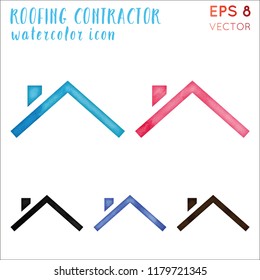Standards For Accent Walls: Exactly How To Make A Vibrant Statement With Paint
Standards For Accent Walls: Exactly How To Make A Vibrant Statement With Paint
Blog Article
Web Content Produce By-
When it pertains to accent walls, the choice of paint shade and wall option can considerably impact a space's overall feel. Understanding just how to strike an equilibrium in between strong declarations and cohesive layout is vital. The dos and do n'ts of accent wall surfaces use a roadmap to navigate this creative process, ensuring your space reflects your style while keeping an unified environment. By taking into consideration factors like illumination, color pattern, and structure, you can transform a space with a solitary wall. Join us as we discover the details of producing a statement wall that talks volumes in a refined yet impactful manner.
Picking the Right Wall
Picking the optimum wall to work as an accent in a space requires cautious consideration of factors such as illumination, space format, and prime focus. When determining the perfect wall surface for an accent, it is vital to evaluate the natural and synthetic lights in the space. A well-lit wall can improve the accent color, while a darker location might not do it justice.
Furthermore, the format of the area plays a significant role. Choosing a wall surface that naturally draws the eye can produce an unified flow in the room. Think about walls that are directly noticeable upon entering the room or those that match existing prime focus like fireplaces or huge home windows.
In addition, recognizing the room's purpose is vital in choosing the ideal wall for an accent. In living line painting near me , for instance, the wall surface behind the main seating location is commonly selected to develop a prime focus. Conversely, in rooms, the wall behind the bed is a popular option for an accent, adding depth and visual interest to the room.
Picking the Perfect Color
When taking into consideration the optimal color for an accent wall surface, it is important to think about the existing shade palette of the area and the preferred atmosphere. The color you choose should match the total theme of the area while adding visual passion.
One approach is to select a color that is currently existing in the area, perhaps in a furniture piece or a piece of art, to develop a cohesive look. Alternatively, you can opt for a different shade to make a strong statement and create a prime focus in the space.
hop over to this web-site like terracotta or mustard can include comfort, while cooler tones like navy or emerald green can bring a sense of sophistication. It is essential to think about the area's illumination as well. Dark shades can make a space feel smaller sized, while light colors can produce a sense of visibility.
Taste the picked color on the wall surface and observe how it alters throughout the day with varying light problems. Bear in mind, the perfect color is one that not only looks good on its own however also boosts the general visual of the space.
Harmonizing Patterns and Appearances
To accomplish a harmonious appearance when incorporating accent wall surfaces, it is crucial to very carefully balance the use of patterns and structures within the area. When choosing patterns for an accent wall surface, consider the existing patterns in the area. If the room already has bold patterns in furniture or decor, choose a more subtle pattern on the accent wall to prevent frustrating the room.
Conversely, if the space is primarily monochromatic or ordinary, a dynamic pattern on the accent wall can include interest and deepness to the room.
Structures play a crucial duty in developing a visually attractive space too. Mixing different appearances includes dimension and richness to the room. For example, combining a sleek, shiny accent wall surface with a plush, textured rug can create a dynamic contrast.
It is essential to strike a balance in between various textures to stop the room from feeling too busy or disjointed.
Final thought
In conclusion, creating an accent wall with paint requires mindful factor to consider of elements such as illumination, shade choice, and equilibrium of patterns and structures.
By selecting the appropriate wall surface, picking a complementary color, and bearing in mind the total layout of the space, a statement wall can improve the space and develop visual passion.
It is very important to stay clear of frustrating the space with way too many strong elements or clashing shades to keep a natural and visually appealing appearance.
